Fall of my junior year I decided to take the semester off school just to focus on my extra curriculars and design. I quickly became interested in design education with the interest of running design workshops for my club, Berkeley Innovation. The interest quickly grew beyond that, however, and as I began my research I expanded my project to explore how to educate workers in Silicon Valley with enough design skills to quickly and effectively start using them in real projects to promote innovtion.
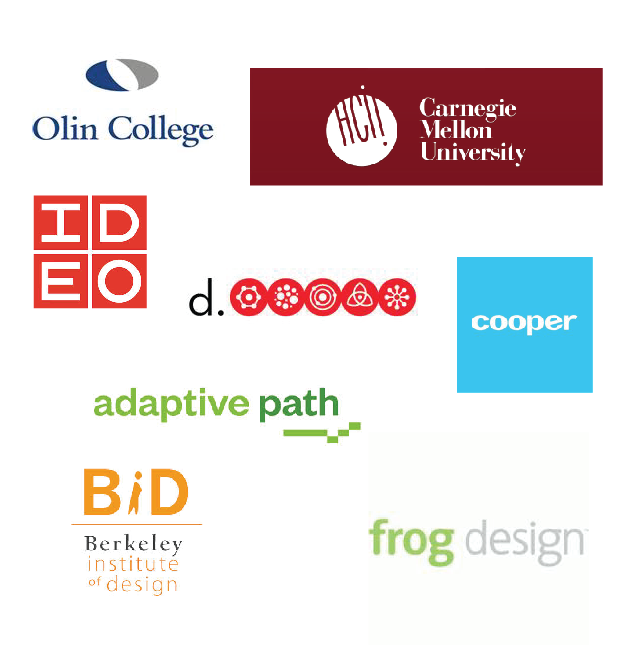
I interviewed people from top design firms and educational institutions from across the US. Here are some highlights of what I found out:
Specific Methods vs. Abstract Design Thinking
Methods are easier to learn and can be directly applied. Learning general concepts takes more time, but can be much more powerful and versatile.
Current toolkits such as the IDEO HCD Toolkit and Frog's Collective Action Toolkit focus on specific methods. They both place the methods in an overarching design framework, but make it difficult for someone without previous experience in design to run a project with those methods.
Generally, I found that design schools focus on the more abstract design thinking, while design firms that teach workshops focus on specific methods.
Design is a process driven by a mindset.
Understanding the a design process is useless without understanding how, when, and why to apply it. To teach the mindset, you need to teach people what it feels like to do design.
Everyone has made their own design process, and they're all exactly the same.
-Empathize, Define, Ideate, Prototype, Test-
-Understand, Observe, Synthesize, Synthesize, Realize, Experiment-
There are many more. I've tried to analyze what they all have in common in order to distill the design process down to a purer form.
Here's a very abstract version of what I think happens in every design process.
1. The designer takes in information from the world.
2. The designer interprets the information from the world.
3. The world gets back ideas on how to improve something from the designer.
4. The world evaluates the ideas and creates more information for the designer to collect.
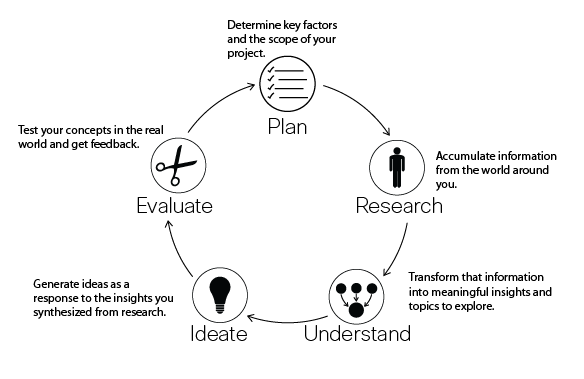
A graphical representation of the 4 steps above. I added Plan, Step 0, which is the step where the designer determines how s/he will execute steps 1 - 4.
I decided to make a toolkit of my own using this framework. The toolkit focuses on a couple of things that I think are critical to success:
Interactivity: The toolkit is a series of worksheets that can be printed and filled out. Each worksheet is accompanied with a guide, so anyone can fill them out, and by filling them out, you're doing design!
Mid-Level Processes: Just like the other toolkits, this toolkit contains specific skills such as conducting and interview, as well as a broad design framework. This toolkit also contains mid-level processes, such as creating a research plan. These mid-level processes help link the broad framework and specific skills to one another, making it simple for anyone to start using the tookit effectively from the start.
Artifacts: Each activity you complete by filling out a worksheet automatically creates an artifact for your team to use. A version control feature at the bottom of each worksheets allows you to organize and track them, making project management and documentation much simpler and more useful.
I am currently in the process of building a website to hold this toolkit. The website will make it easy to access and print specific activities, while giving a great visual overview of the process. Its easier and faster than a giant PDF, and integrates more easily into everday work flow.
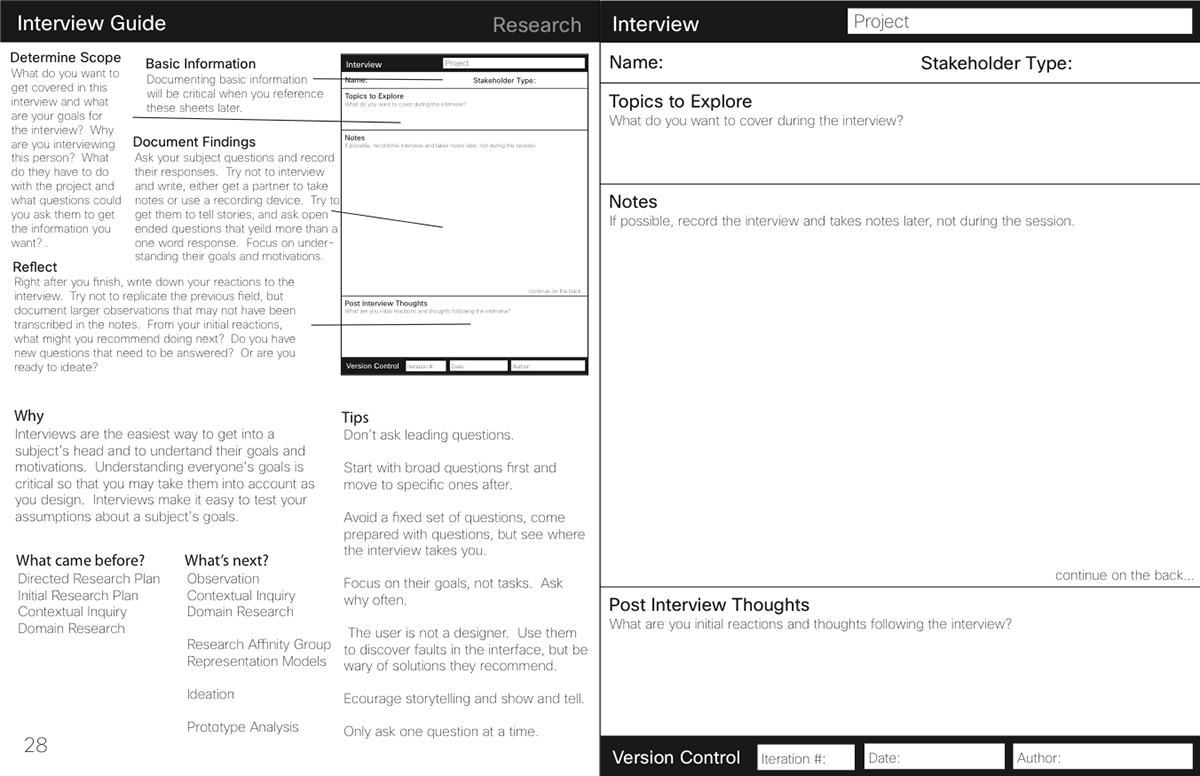
The guide and worksheet pair for Interviewing. Filling out worksheets is a great way to get people to start doing, rather than just reading.
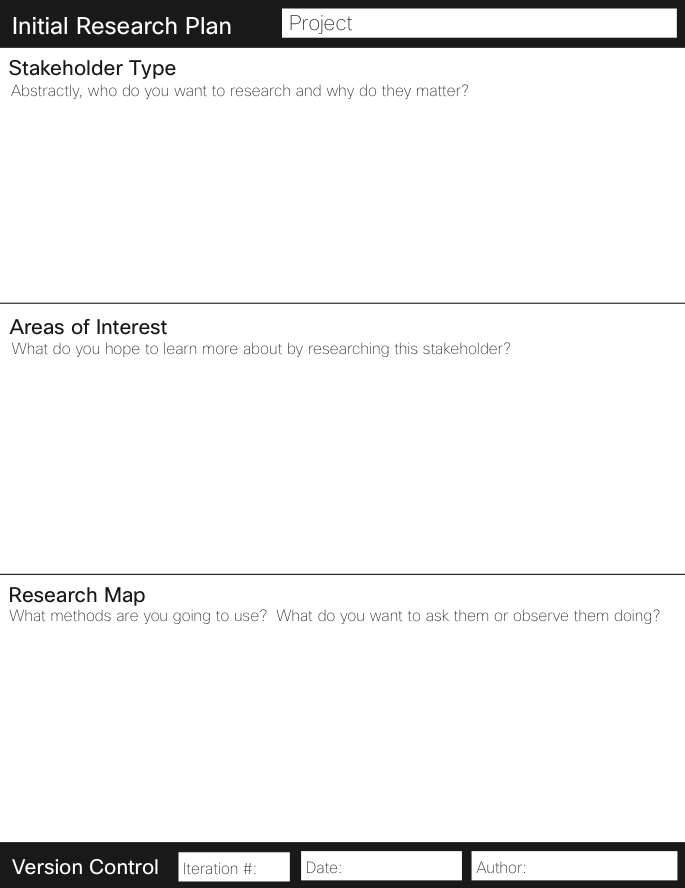
A mid-level process guide. Rather than jumping straight to specific research methods, this toolkit first teaches people how to create a research plan. That way they can do everything on their own, and learn the design process as they go.

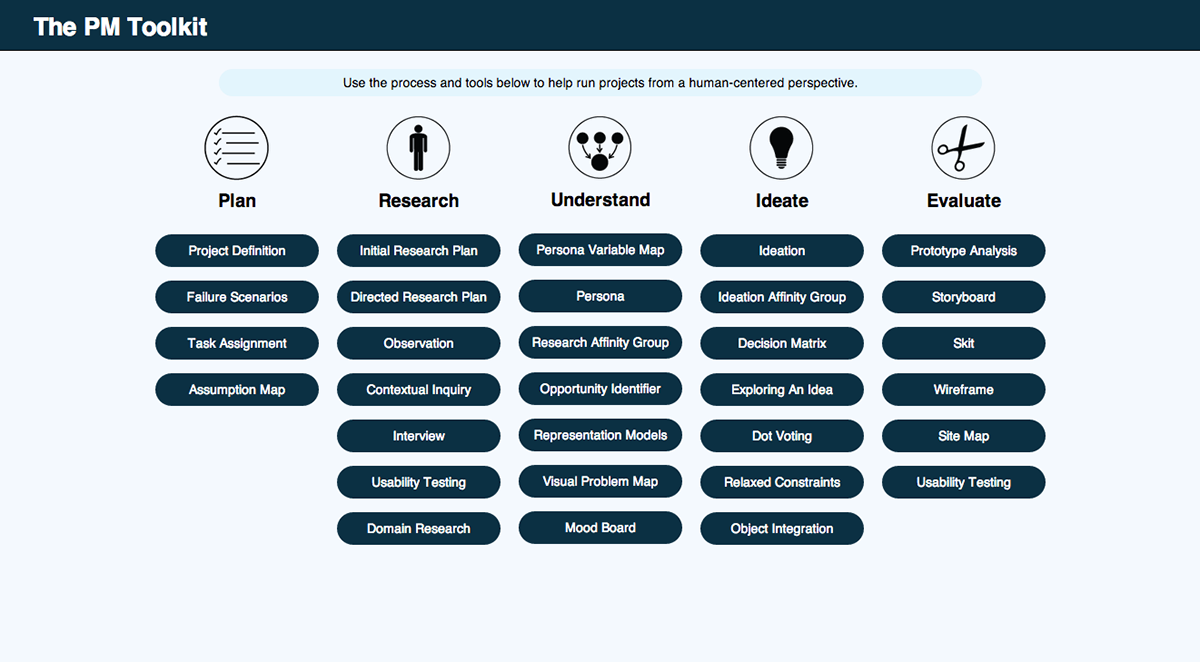
This is a second, currently live iteration of the website. You can visit the site at www.thepmtoolkit.com.
Special thanks to Brittany Cheng, Joyce Liu, and Hari Iyer for help conducting the research that lead to this project.




